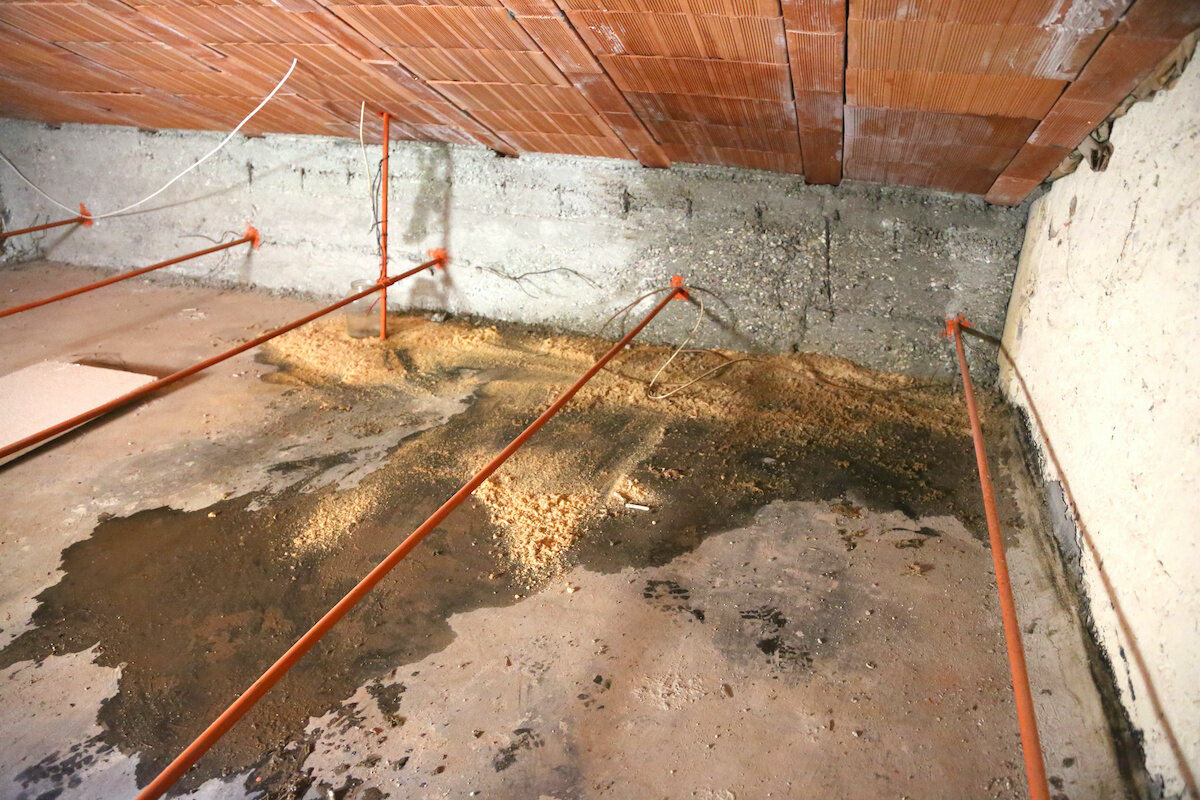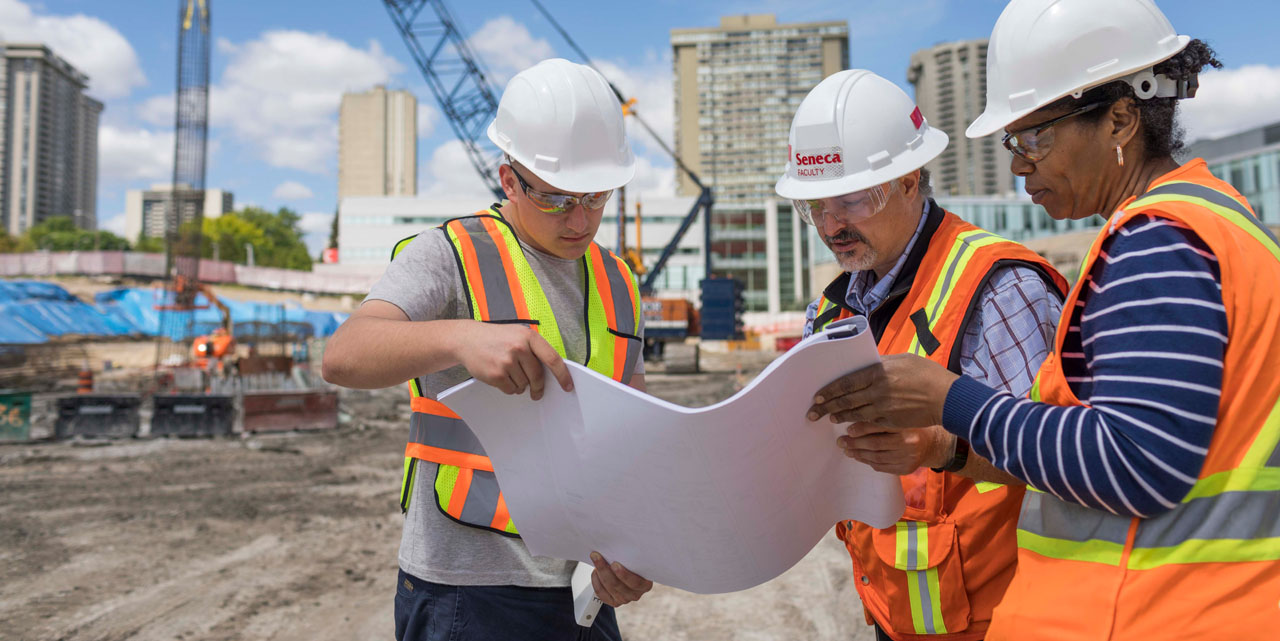Home>Ideas and Tips>Unveiling The Mysteries Of Structural Engineering


Ideas and Tips
Unveiling The Mysteries Of Structural Engineering
Published: October 20, 2024
Discover the fascinating world of structural engineering, from ancient marvels to modern innovations, ensuring safety and stability in our built environment.
(Many of the links in this article redirect to a specific reviewed product. Your purchase of these products through affiliate links helps to generate commission for Storables.com, at no extra cost. Learn more)
Structural engineering is a discipline that has been shaping our built environment for centuries. From the majestic pyramids of ancient Egypt to the towering skyscrapers of modern cities, structural engineers have played a crucial role in creating iconic structures that not only stand the test of time but also ensure the safety and stability of our communities. In this article, we will delve into the fascinating world of structural engineering, exploring its history, principles, and the critical role it plays in ensuring the integrity of our built environment.
The Roots of Structural Engineering: Ancient and Medieval History
While the profession of a structural engineer as we know it today only really took root in the 19th century, principles of structural engineering have been applied throughout human history. Ancient societies had a basic understanding of structural integrity and appreciated the strength of structural members. They used these principles to create durable, practical structures with incredible aesthetic appeal.
One of the most impressive examples from ancient times is the construction of the pyramids in Egypt. These colossal structures were built using vast stone blocks, ingeniously arranged to distribute the weight evenly across the structure. The Egyptians' understanding of structural integrity allowed them to create structures that have stood for millennia despite the harsh desert environment.
The Romans advanced this field by pioneering the use of concrete, a mixture of cement, aggregate, and water. The introduction of this new structural material transformed the landscape of civil engineering. Structures such as the Roman Colosseum and the Pantheon still stand today as testaments to their structural design process. The Romans' use of concrete allowed them to build larger and more complex structures than ever before, laying the foundation for future advancements in structural engineering.
Read more: Unveiling The Mystery Of Persistent Odors
The Middle Ages and Beyond: Refining Structural Analysis
During the medieval period, structural analysis took a giant leap forward with the advent of Gothic architecture. This style incorporated pointed arches, ribbed vaults, and flying buttresses, all structural elements that allowed for the construction of taller, more open spaces while ensuring the structural integrity of the buildings. However, the profession of structural engineering remained largely unrecognized until the 19th century.
With the advent of industrialization, the need for individuals who specialized in understanding and predicting how structures would behave became apparent. This led to the formal recognition and growth of the profession of structural engineering. The Industrial Revolution brought new materials and technologies that transformed the field, enabling the creation of previously unimaginable structures like bridges and skyscrapers.
Modern Structural Engineering: Innovations and Institutions
The advent of modern structural engineering brought forth new materials such as steel and reinforced concrete. These materials expanded the possibilities of structural form, giving rise to an era of unprecedented construction innovation. Steel, with its high tensile strength and durability, became a cornerstone in the construction of modern skyscrapers. Reinforced concrete, which combines the strength of steel rebar with the durability of concrete, has been used in a wide range of applications from bridges to high-rise buildings.
The 20th century also saw the establishment of professional organizations like the Institution of Structural Engineers in the UK in 1908. This body and others like it have helped to standardize the profession and set standards for structural engineering design and safety. These organizations have played a crucial role in ensuring that structures are designed and built with safety as the top priority.
The Structural System Today: A Blend of Art and Science
Today, structural engineering is a sophisticated discipline that combines scientific principles with artistic vision. Structural engineers are responsible for ensuring the safety and durability of a wide array of structures, from bridges and stadiums to residential homes and office buildings. They use advanced tools and software for structural analysis to predict how a structural system will behave under various loads and conditions.
This meticulous process helps to ensure that every structure meets the necessary safety standards while also achieving the desired aesthetic impact. Structural engineers must balance the need for safety with the need for functionality and aesthetics, making them true masters of their craft.
Advanced Tools and Techniques
Structural engineers employ a wide range of advanced tools and techniques to analyze and design structures. These include:
- Finite Element Analysis (FEA): This method uses numerical methods to solve partial differential equations that describe the behavior of complex systems under various loads.
- Computer-Aided Design (CAD): Software like AutoCAD and Revit allow engineers to create detailed designs and models of structures.
- Building Information Modeling (BIM): BIM integrates all the data related to a structure into a single digital model, facilitating collaboration and analysis.
- Dynamic Soil-Structure Interaction (DSSI): This technique helps predict how structures interact with their foundation soil during seismic events, ensuring they can withstand earthquakes.
Read more: Unveiling The Mystery Of Load-Bearing Walls
The Impact on Society
Structural engineering plays a pivotal role in shaping society, leaving a lasting impact in numerous ways:
- Safety and Stability: By ensuring the safety and stability of structures, structural engineers safeguard lives and property. They develop innovative designs that withstand natural disasters and environmental challenges.
- Iconic Architectural Marvels: Structural engineering enables the construction of iconic architectural marvels, enhancing the aesthetic appeal of cities and serving as cultural landmarks.
- Economic Growth: It drives economic growth by facilitating the development of modern cities and enabling the construction of large-scale projects.
- Sustainability: Sustainable structural engineering practices contribute to reducing environmental impact, optimizing energy efficiency, and promoting eco-friendly construction methods.
Unveiling Structural Integrity: The Role of Inspection Reports
In the realm of construction and infrastructure, the foundation of safety and longevity rests upon the vigilant eyes of structural engineers and their indispensable reports. A comprehensive structural engineering inspection report is a meticulous compilation of observations, evaluations, and recommendations that collectively form the backbone of structural integrity assurance.
Components of a Comprehensive Inspection Report
A comprehensive inspection report begins with a visual examination and assessment where engineers scrutinize every inch of the structure from its external facade to its internal support systems. They keenly observe for signs of wear and tear, structural deformations, or any other anomalies that could hint at potential issues.
Utilizing state-of-the-art tools and techniques such as ultrasound, thermal imaging, and laser measurements, they delve beneath the surface to unveil hidden weaknesses. This visual exploration is akin to a detective unraveling a mystery, piecing together clues that may otherwise remain concealed until a crisis emerges.
Following this detailed examination, structural inspectors meticulously document their findings and observations. These reports are a treasure trove of data featuring photographs, diagrams, and detailed descriptions of structural elements and their conditions. Such documentation not only provides a clear snapshot of the structure’s current state but also serves as a historical record.
Moreover, a comprehensive inspection report goes beyond mere diagnosis; it also offers recommendations for structural improvements based on their expertise and the data collected during the inspection. These recommendations are the blueprint for action guiding property owners and construction professionals in making informed decisions to safeguard the structural well-being of their investments.
Importance of Regular Structural Inspections
Regular structural inspections are not just a prudent measure; they are an absolute necessity in ensuring the continued safety and reliability of our constructed environment. Much like routine health check-ups for individuals, these inspections act as preventive medicine for structures identifying and addressing issues in their infancy before they escalate into major problems.
Structural inspections offer property owners and stakeholders peace of mind knowing that their investments are not only meeting regulatory standards but are also being actively cared for to ensure their longevity. These assessments are critical components of risk management minimizing the chances of unforeseen structural failures that could result in devastating consequences both in terms of human safety and financial implications.
Solving Mysteries of Structural Failures: The Role of Forensic Engineering
When tragedy strikes, and a building collapses or a bridge crumbles, the world turns to forensic engineering to unravel the mystery behind these catastrophic events. Forensic engineering is a critical discipline that plays a pivotal role in investigating structural failures providing essential insights into the factors that led to the incident and helping prevent similar occurrences in the future.
The Definition and Purpose of Forensic Engineering
Forensic engineering is the application of engineering principles to investigate and analyze structural failures accidents and other engineering-related incidents. It seeks to understand the root cause of these events through meticulous examination and data analysis. Unlike routine engineering projects forensic engineers step into the aftermath of disasters working as detectives to piece together the puzzle behind what went wrong.
The Multidisciplinary Nature of Forensic Engineering
Forensic engineering is a multidisciplinary field drawing upon various branches of engineering including civil mechanical electrical materials engineering. Experts in this field possess not only technical expertise but also sharp analytical problem-solving skills. They collaborate with other professionals like architects geologists legal experts gathering a comprehensive understanding of the incident’s intricacies.
The Investigative Process
Forensic engineering investigations involve thorough site inspections collection evidence detailed documentation structural elements advanced technologies like laser scanning computer simulations laboratory testing aid reconstructing events leading failure accurately establishing clear timeline events identifying underlying factors caused collapse failure.
The Role in Preventing Future Failures
One primary objectives forensic engineering learn from failures prevent recurrence insights gained investigations lead implementation safer design practices updated building codes improved construction methods understanding past mistakes create safer built environment future.
Conclusion
Structural engineering is a fascinating journey of human innovation shaping our world through its intricate principles and practices. From ancient civilizations to modern marvels this discipline continues evolve driven advances materials science digital design techniques greater understanding environment. As we look future lessons learned past will continue inform inspire responsibility today’s construction companies structural engineers continue tradition innovation striving create structures safe functional enhance human experience.
In conclusion unveiling mysteries structural engineering reveals profound impact discipline has shaping society ensuring safety stability structures while driving economic growth sustainability. By understanding intricacies behind structural integrity inspection reports forensic engineering we can build safer more resilient future generations to come.
Was this page helpful?
At Storables.com, we guarantee accurate and reliable information. Our content, validated by Expert Board Contributors, is crafted following stringent Editorial Policies. We're committed to providing you with well-researched, expert-backed insights for all your informational needs.













0 thoughts on “Unveiling The Mysteries Of Structural Engineering”